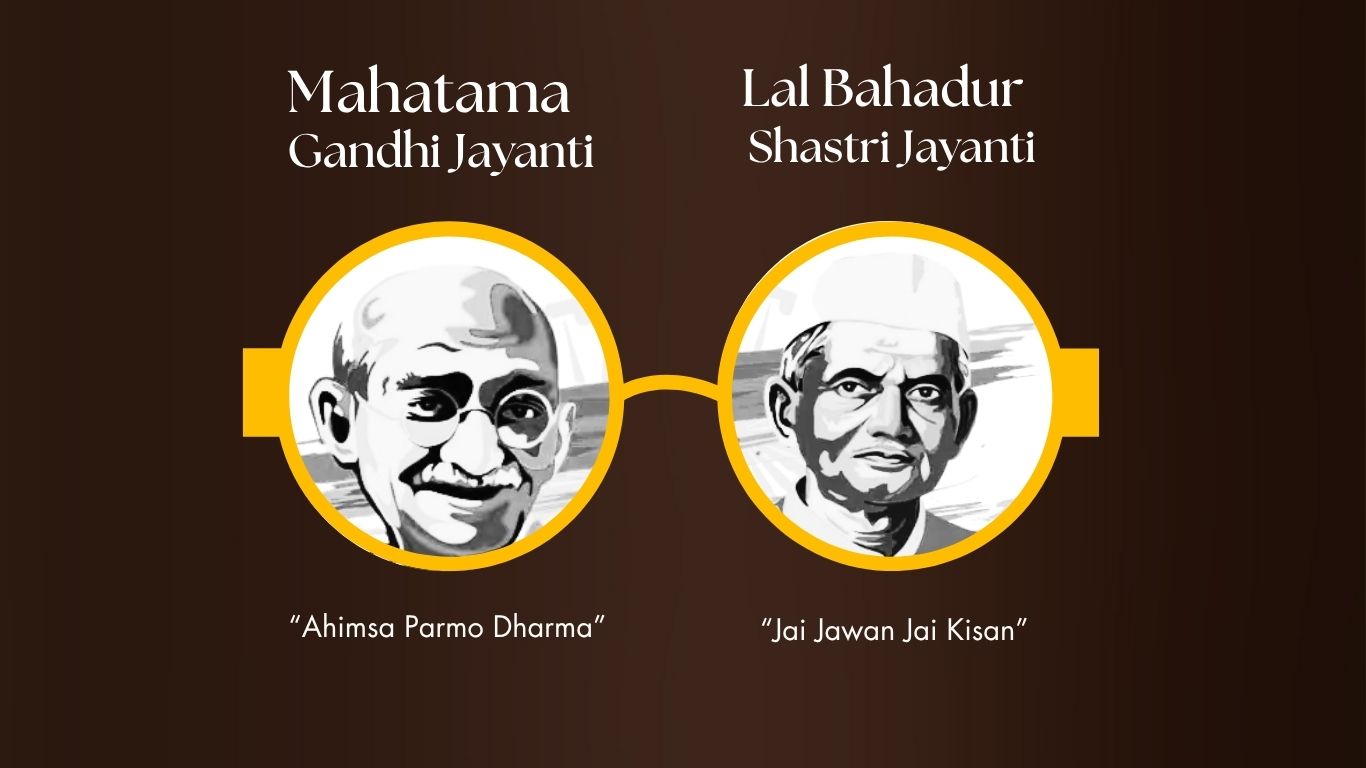
Every year, as the warmth of summer gives way to the gentle breeze of October, India pauses on the second day of the month. It’s a national holiday, but it is so much more than a day off. It is a rare and profound alignment on the calendar—the birth anniversaries of two men who, in their own distinct ways, sculpted the soul of a nation. Mahatma Gandhi, the apostle of peace, and Lal Bahadur Shastri, the emblem of resilience.
We often remember them as historical figures, their faces etched on currency notes and their statues standing tall in town squares. But to let them remain as distant icons is to miss the point entirely. October 2nd is not just about remembrance; it is a personal invitation to reflect on their living legacies—a call to move from Ahimsa to Jai Kisan, from a principle of non-violence to a slogan of empowerment, and to pledge these values in our own lives.
The word Ahimsa Parmo Dharma—non-violence is the supreme duty—is often heard, but its revolutionary depth can be lost to time. In an era defined by brute force and colonial oppression, Gandhi’s idea was not passive weakness; it was an active, courageous force. It was the strength to look injustice in the eye and refuse to become like it.
Imagine the scene: thousands of Indians, armed with nothing but conviction, marching peacefully against the might of an empire. They faced lathis, imprisonment, and indignity, yet they did not raise a fist. This was not a strategic retreat; it was a moral offensive. Gandhi taught that true victory isn't about defeating an enemy, but about transforming the relationship. His peace was a resilient, stubborn peace—one that wore down injustice through unwavering truth and dignity.
In our world today, where conflicts are amplified on social media and disagreements quickly turn toxic, Gandhi’s Ahimsa is a guiding star. It asks us: Can we disagree without being disagreeable? Can we stand firm in our convictions without resorting to verbal violence? To pledge peace today is to practice active empathy, to choose understanding in the face of provocation, and to build bridges where others would build walls. It is the peace of the strong, not the silence of the timid.
If Gandhi’s legacy is a grand, sweeping epic, then Lal Bahadur Shastri’s is a powerful, concise poem. A man of small stature but immense integrity, his leadership was defined not by grand speeches, but by quiet, unyielding action. He lived the values he preached, from selling his car to pay for a foreign tour to his simple, spartan lifestyle.
In 1965, when Pakistan attacked India, the nation faced a crisis of both security and food. It was in this crucible that Shastri gave the nation a mantra that would echo through the ages: Jai Jawan, Jai Kisan (Hail the Soldier, Hail the Farmer).
This was not just a catchy slogan; it was a masterstroke of national psychology. It identified the two pillars that would hold the nation steady in its hour of need. The soldier at the border, defending the nation’s sovereignty with his life, and the farmer in the field, fighting a different but equally vital battle against hunger and scarcity. Shastri recognized that a nation’s security is not just about its borders, but also about its breadbasket. He empowered the common person, making the farmer feel as essential to the nation’s destiny as the soldier.
His call for the country to skip a meal every Monday to conserve food was a testament to his belief in collective resilience. He didn't command from an ivory tower; he led by example, inspiring a billion hearts to contribute to a common cause.
While their methods seemed different—one the path of the Satyagrahi, the other of the pragmatic leader—their core values were deeply intertwined. Gandhi’s Ahimsa was not a fragile concept; it required immense inner resilience to practice. And Shastri’s resilience was rooted in the Gandhian principles of truth, simplicity, and sacrifice.
Gandhi built a movement on the resilience of the human spirit, proving that moral force could outlast physical power. Shastri applied that very resilience to the practical challenges of a young nation, showing that the strength forged in the independence struggle could be channeled to defend and feed the nation.
One gave us the moral compass; the other showed us how to hold it steady in a storm.
So, on this October 2nd, as we remember these two giants, what does it mean to make a personal pledge of peace and resilience?
In an age where information moves at a dizzying pace, their legacy offers a crucial anchor. Platforms like ExploreRealNews remind us of the importance of seeking truth in a complex world—a direct echo of Gandhi's pursuit of 'Satya'. Just as he distinguished truth from falsehood, we too must cultivate the resilience Shastri embodied to discern fact from fiction, to build our understanding on a foundation of integrity rather than hearsay. Their journey does not end with the history books; it finds new expression in our modern challenges.
As we move forward, let us carry their torch—the gentle, unbending flame of Ahimsa and the steady, empowering light of Jai Jawan, Jai Kisan. Let our pledge be our progress, and our remembrance, a renewal of our commitment to building an India, and a world, grounded in the timeless values they lived by. Stay tuned for more industry updates. Follow us on facebook, Instagram, Linkedln and twitter for latest updates that matter to you.